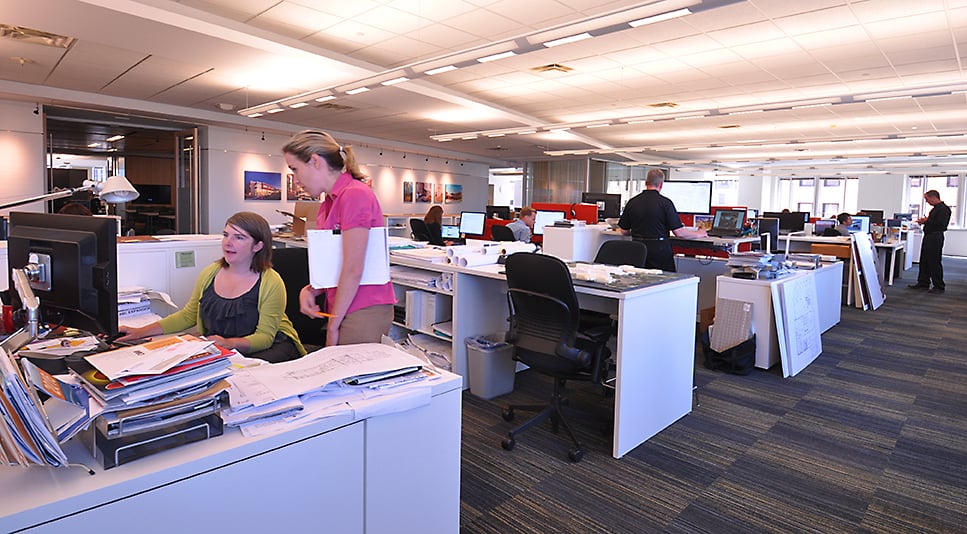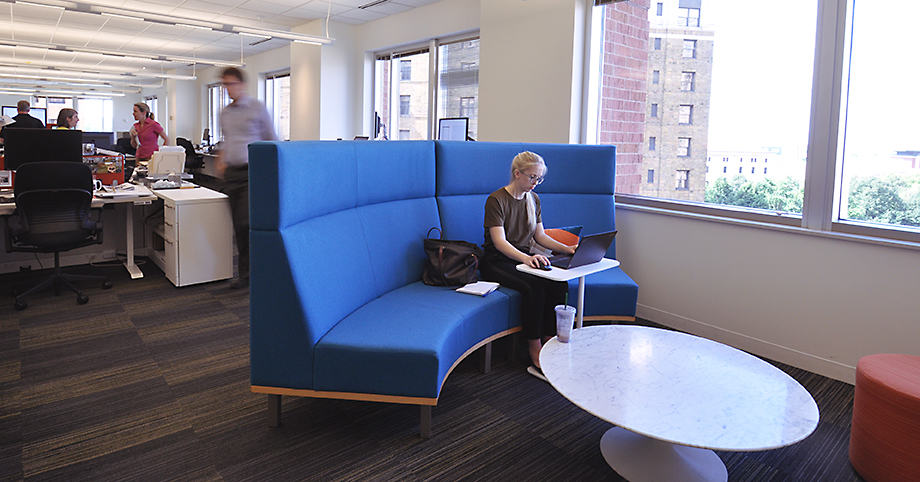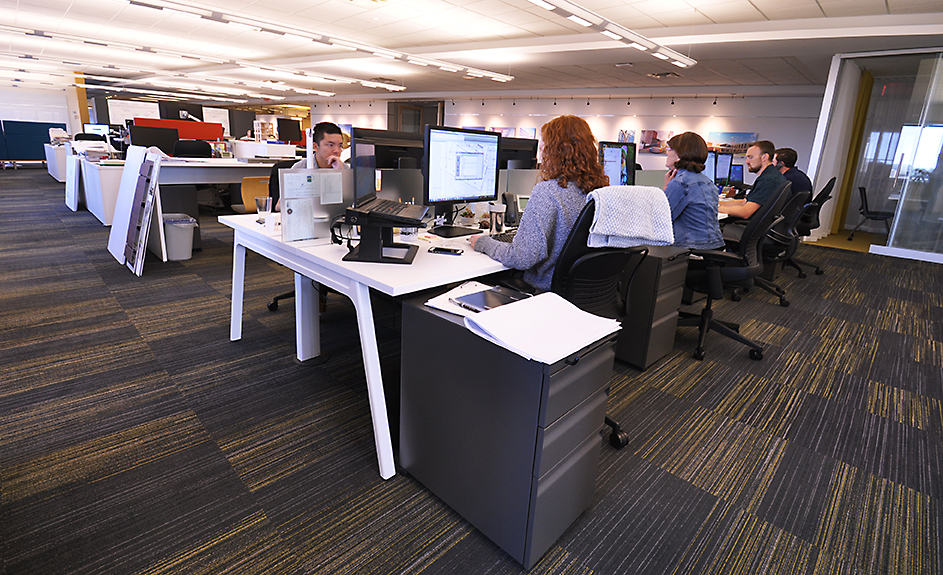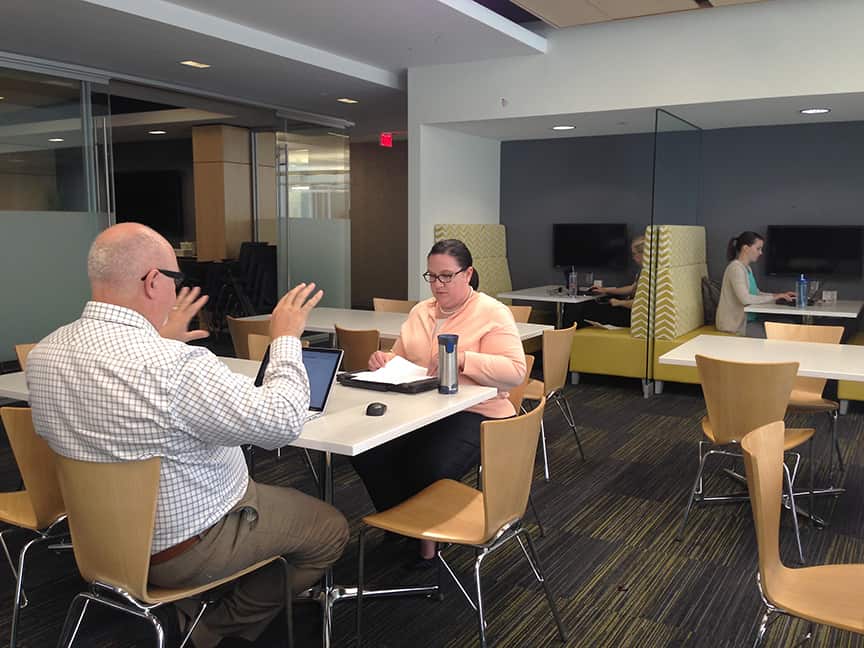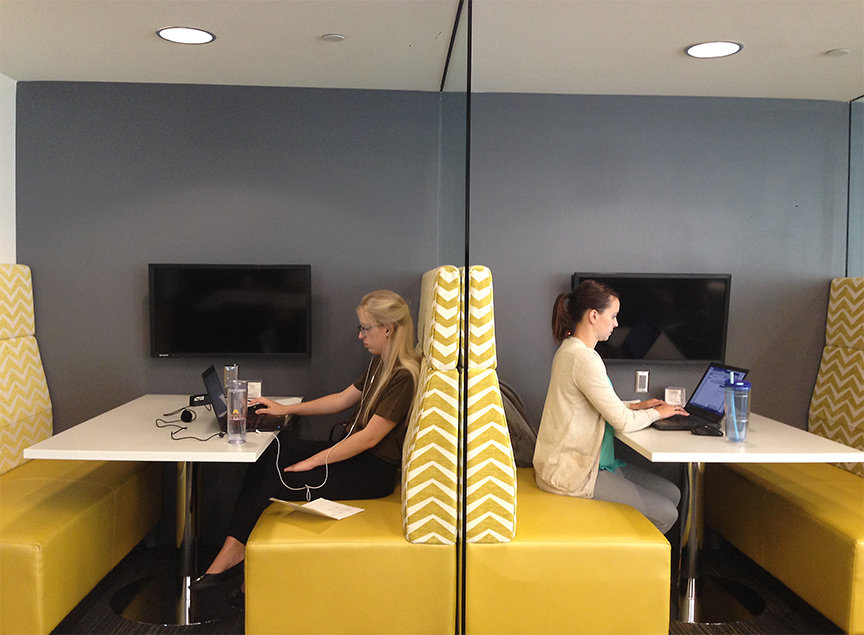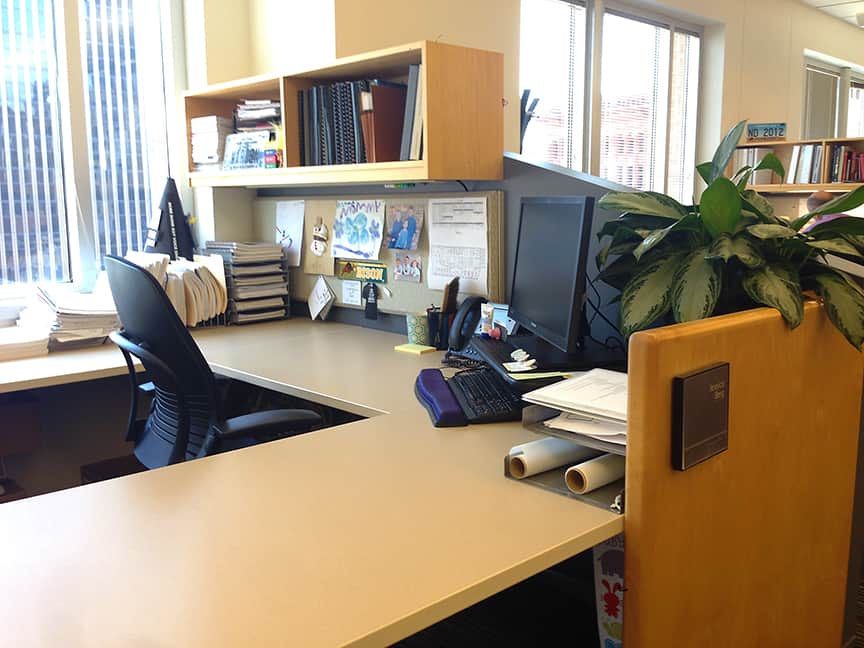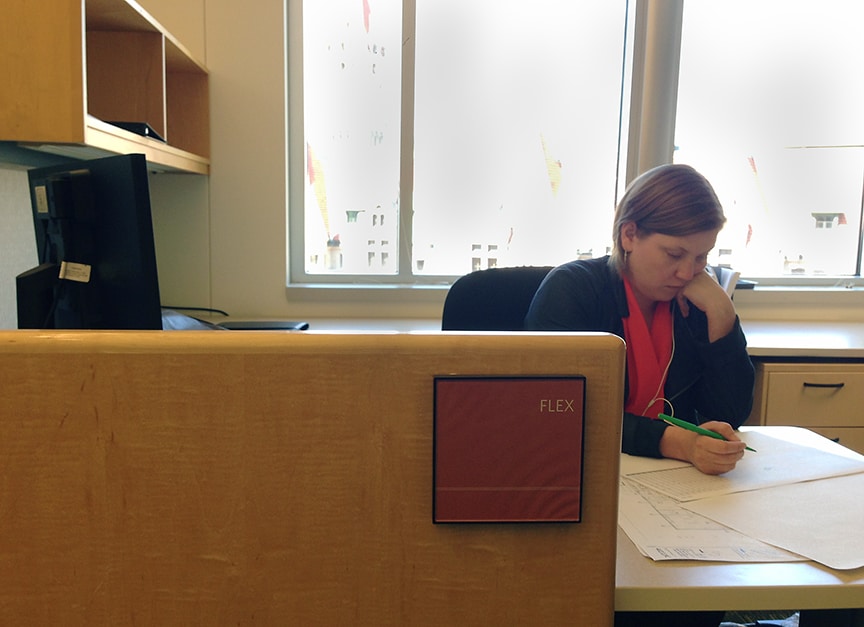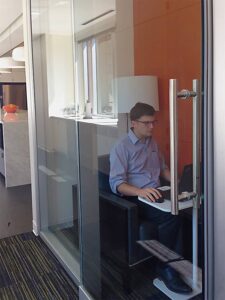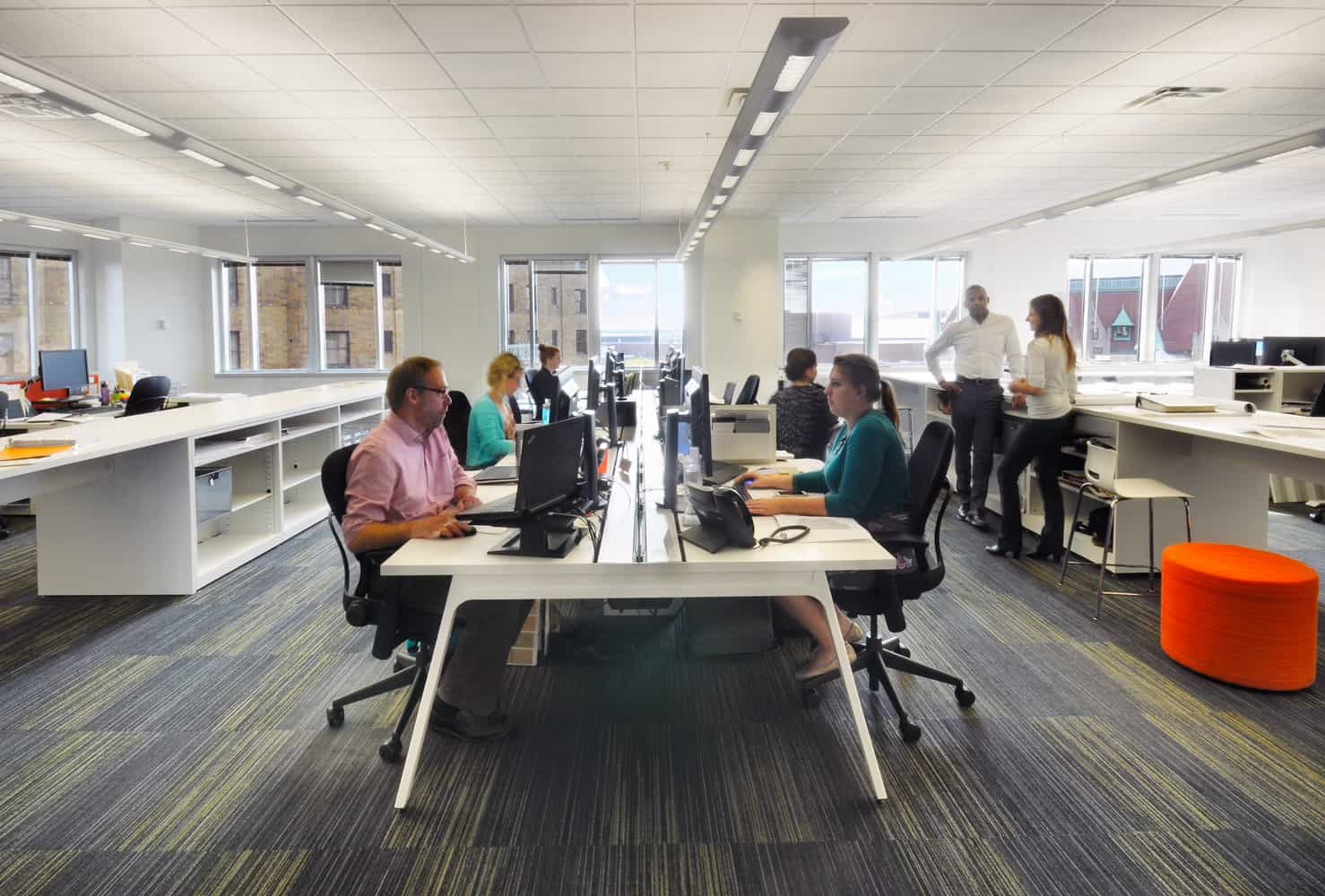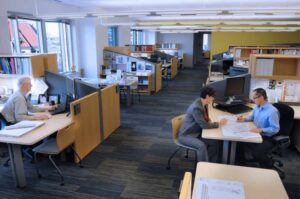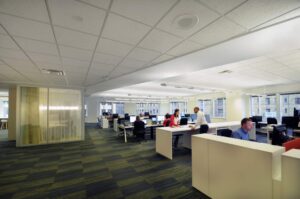This article is part three of a three-part series about enhancing the way we work at BWBR. The series covers why we are changing; what we are changing; and the results so far
When we transformed part of our office in 2015, we did it with purpose as well as vision: a need to accommodate growth and an idea to see how we could evolve into a more nimble and connected workplace.
Our transformation is well underway (and far from complete). The advantages we’re seeing from FLEX are beyond what we could have hoped. Even so, we still have improvements that we’d like to make and are keeping an open mind. Every day we listen, learn, and adapt – moving towards our goal of becoming a mobile, flexible team of teams.
Measuring and Managing the Change
A key part of our plan is to measure and manage the change so that we continually improve upon what we’re doing. Our approach has been to be as transparent as possible with what we are thinking. We’ve been using staff surveys, small group discussions, and larger workshops to inform people and gather feedback as we go.
As part of this process, our free address pioneers have become change agents and advocates for the FLEX program. They also provide input for how we can improve it. For example, before our office evolution, some of our managers felt the need to sit near their people to manage what they were doing. After discussions, individuals realized they were already effectively managing people who do not sit near them. In addition, we pointed out that good management isn’t about visual oversight; it’s about clear communication and feedback.
Communicate, communicate, communicate. It’s hard to over communicate something like this. The more you talk about it and engage in active listening, the more people understand their opinion matters and informs the process. They have come to support new ways of working as the new normal and have embraced the new work space, as well.
FLEX Works Better When People Choose It
Making this a voluntary program helped as we recognized that FLEX isn’t for everyone. FLEX works well for some and not as well for others; nor is it right for all job roles. For example, some roles in our office require referring multiple times per day to large sets of drawings, which are not very portable but, rather, easier to manage with a permanent desk.
Becoming More Connected
A positive result we have heard is that staff feel more connected when working in the FLEX studio. Traditionally, project team members would only interface while sitting next to each other. Now, as part of a more open studio with multiple teams mixed together, staff are making connections beyond their immediate team. It is helping them build relationships, expand their resources and making BWBR a more integrated practice.
Communicating Better across Firm
The firm is also seeing individuals become better communicators. Because free addressers are working anywhere at any time, communication with them needs to be clear and intentional. Additionally, better communication in the office is translating to better communication between our offices and with our consultant partners and our clients. Our most recent survey showed a 15-percent increase in staff who felt “very comfortable” working with mobile teams/team members after just a few months. We anticipate even more growth in this area over the next year.
An Uncluttered Life
The freedom to move around the office is freeing people from clutter that usually collects at an assigned desk. Free address staff have lockers for personal belongings and files. However, as they fall into their day-to-day rhythm working around the office, they start to forget what’s in their locker and realize they have everything with them. From that comes the realization they don’t need all the stuff, which translates into less clutter and ultimately less stress – a real benefit. They can be productive almost anywhere.
Healthier Creative Employees
Wellbeing is a key part of our culture, and the new office elements are elevating that aim. For example, the environment invites multiple posture options for improving wellness. People can sit at desks, stand, or lounge; they can move locations to a sunny work space or a quiet corner. Even better, everyone in the office experiences FLEX, so everyone has these opportunities. In addition to the physical benefits of changing postures, some staff have noted the mobility increases their creativity and, likely, their productivity, too.
Increasing Space Utilization
The original design for our office remodel planned for about 10-percent growth of staff without adding additional space – about 12 more staff. We grew right past that number and hired about 30 since the planning was started. Interestingly, even though we have about 17 more people on the same floor than planned, we’ve been able to accommodate them because of our FLEX program. A little snug at the moment, but without FLEX we would have been forced to add more space with significant costs.
Sharing Our Learnings
The new FLEX work environment and café is an amazing showcase for others who are wrestling with the same issues to come and learn. The space has opened opportunities to invite people into our office for a conversation about what we’re doing and learning (both struggles and successes) and gain a deeper understanding of their needs and challenges.
Retaining and Attracting Top Talent
As we mentioned in part one of this series, the idea of FLEX transcends generations. It is appealing to both young and experienced talent. People want flexibility to work the way they want or need to work. FLEX has been an interesting differentiator when it comes to recruiting. New talent are impressed by our space and the efforts we’re making to change the way we work.
Opportunities and Questions We Still Have
While we’ve gained significant benefits from free address and FLEX, we still have work to do. Currently, about 15 percent of our staff are free address, so the direct impact is to a smaller percentage of the firm. Our hope is to grow the percentage of free address staff over the next year. In addition, we know there are people who still have reservations about FLEX, so we’ll keep spreading the news and talking about the benefits.
Are we better because of the changes we have made? Are we more productive? Are the solutions we design better? Are we collaborating more, differently, or better? This is what we hope to learn, and our goal is to put tools and measurements in place to better assess that in the coming year. And finally, because we plan to always be evolving into something better, we’ll continue to have open conversations, collect feedback, listen, learn, and improve as we go.


